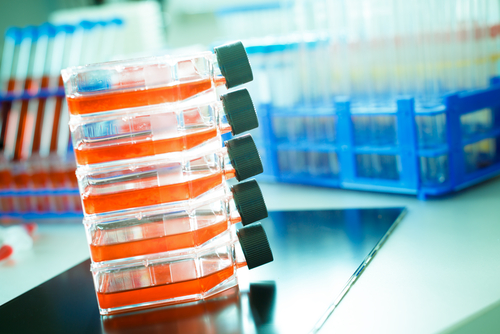Study Establishes New Cellular Model to Investigate Muscular Dystrophies

Cellular models can elucidate molecular mechanisms underlying several diseases, reducing animal usage in biomedical sciences and following the guiding principles for animal testing. Now, researchers at the Karolinska Institute and at the Karolinska University published a study entitled “Primary Murine Myotubes as a Model for Investigating Muscular Dystrophy” in the journal BioMed Research International where they establish mouse cell cultures of myotubes to study calcium alterations associated with muscular dystrophies (MDs).
MDs include more than 30 genetic diseases where gene mutations lead to muscle cell dysfunction causing progressive weakness and degeneration of skeletal muscles. Patients with MDs will eventually stop walking and, in some cases, breathing and swallowing. There is no cure for muscular dystrophies though available medication and therapy can reduce the symptoms and slow the course of disease.
Muscle cell contraction is controlled by fluxes of calcium ions (Ca2+) into the cell. The physiological levels of Ca2+ are often altered in muscular dystrophies with calcium accumulating inside the cell, which affects its normal function. To study the molecular mechanisms underlying changes in Ca2+ levels the research team isolated progenitor cells, known as satellite cells, from mouse muscle fibers. By culturing these satellite cells in flasks with special medium, they induced them to differentiate into contractile skeletal muscle cells.
Importantly, they found that differentiated cells share physiological properties with muscle fibers. Upon electrical and chemical stimulations, they measured intracellular calcium oscillations that confirmed these cells as a reliable model for functional studies. This new cellular model could also be genetically modified to study the effect of mutated genes associated with MDs. Moreover, it was possible to express a new gene in satellite cells, although researchers found that after differentiation they do not completely replicate the calcium response of adult muscle fibers.
Despite the limitations, this cellular model can be a useful cell model to investigate calcium homeostasis alterations in MDs, reducing the number of animals used in experimentation and allowing researchers to explore the molecular mechanisms behind these malignancies. “Muscle dystrophies are accompanied by impairment of intracellular calcium balance. Therefore, it is of particular importance to study calcium pathways within the muscle cells to elucidate precise molecular mechanisms underlying these disorders,” the authors concluded.






